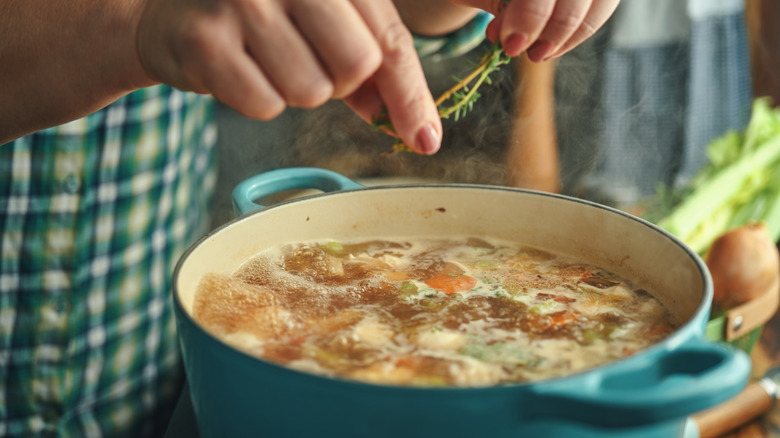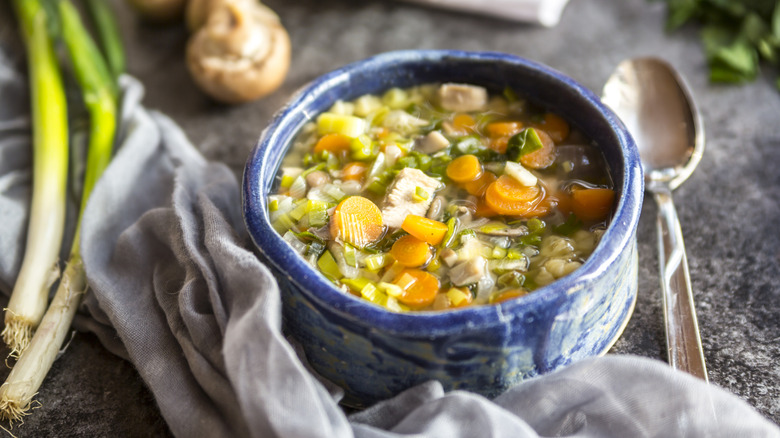Why Boiling Your Soup Is Actually A Big Mistake
Cozy, customizable, and simple to make, soup is the one-pot provision that needs no introduction. Still, despite its convenience and relative ease of preparation, it's not impossible to botch a batch. One of the biggest traps you can fall into is a common and seemingly harmless one. Although bringing soup to a roaring boil may feel like a good way to get the job done quickly, it's a culinary faux pas that can destroy its quality.
When you boil soup, you run the risk of overcooking its proteins — and who wants a bowl of lemon chicken noodle soup made with tough, rubbery poultry? Similarly, bringing soup to a boil will make those garden-fresh veggies wilt into a mushy mess. Tough meat and soggy veggies? No thank you. In addition to damaging its textures, boiling can also diminish the flavors of a soup. The dynamic taste of veggies and herbs can be attributed to their volatile compounds; tiny molecules that contribute to their aromatics and specific flavors. However, volatile compounds are sensitive to heat. When the herbs, roots, and vegetables in your soup are boiled, the compounds evaporate into thin air, leaving behind a pot of flavorless ingredients.
The best way to heat soup is with a gentle simmer
Taking soup all the way to a boil is easy to avoid. Instead of cranking up the heat until your soup rumbles and smokes like a witch's cauldron, simmer the pot on low heat. If you don't trust yourself to visualize the difference between simmering and boiling, use a meat thermometer to take its temperature. At sea level, both water and broth boil at 212 degrees Fahrenheit. A proper simmer should clock in somewhere between 185 and 205 degrees Fahrenheit.
To speed up cooking without scorching and destroying your ingredients, cook soup in a covered pot to prevent the steam from escaping. As the soup heats up, steam rises and recirculates back into the pot, concentrating the heat and moisture to facilitate even cooking and tender textures. The exact amount of time it takes to cook soup depends on the ingredients that you use, but you'll know it's done when the ingredients are tender, fragrant, and flavorful. Whether it's a classic pasta e fagioli or a comforting matzo ball soup, you deserve to enjoy the flavorful benefits of a slow-simmered soup.

